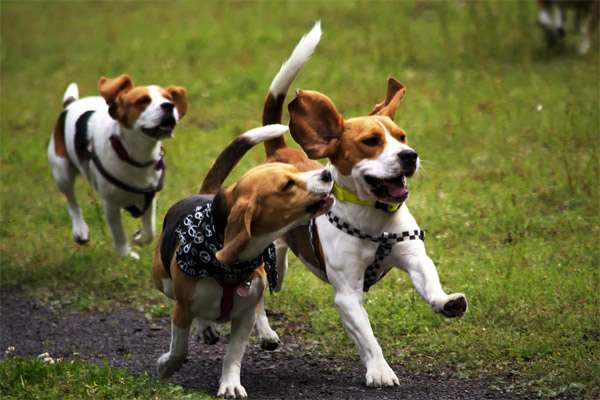Beagle training and education is an exciting experience. When starting to train and educate a beagle, you need to be clear about who you are dealing with.
The desire to communicate and flock is good because the beagle is a tireless companion in walks, a constant participant in outdoor games, a hospitable and friendly dog. However, loneliness is unbearable for him – and for you, it can turn into some not too desirable interior changes. In addition, neighbors will complain of very loud howling and barking.

An excellent sense of smell can make a beagle a hunter not only for the game but also for prohibited substances at customs. And it will also help him find the most stinking filth on a walk – and if you do not try to eat it, then at least fallout.
Resourcefulness and independence are excellent qualities for a working dog. However, if the beagle gets bored, he will be extremely resourceful in tricks and pranks.
The beagle is not aggressive at all, but after playing it can bite. This needs to be corrected during the upbringing of the beagle.
The Beagle is not the easiest dog to train, but not because of stupidity, but because of its pronounced independence. In addition, they are interested in everything, which means that they will often be distracted. Often.
Considering all of the above, we can safely predict: in the process of raising and training a beagle, you will need a lot of patience and an ocean of perseverance!
Sometimes even dozens of repetitions of command do not lead to the desired result. At the same time, tediousness and monotony infuriate the beagle. Classes with him should be fun and short, at least twice a day, for a total of up to 30 minutes. Skills are reinforced at every opportunity (for example, ask your dog to sit down before placing a bowl of food in front of him).

When training a beagle at home, it is important that the learning process is enjoyable for all stakeholders.
Stock up on toys at home. And do not give out the entire stock at once. Better periodically change one to another so that the beagle does not get bored.
Beagle training begins from the first day the puppy appears in the house. All the rules of behavior must be learned before 6 months – then it is extremely difficult to re-educate a pet.
The main principle of beagle training and education is consistency. The commands are clearly formulated. The next command is studied only after mastering the previous one. All family members must have agreed requirements for the dog.
Punishments (shouting, hitting) are unacceptable – they will cause harm, not benefit. As a result, the dog will lose confidence in you, become fearful and completely uncontrollable. For a beagle, only the carrot method is permissible. This is not necessarily a treat, sometimes praise is enough, but do not skimp on it. At first, however, you should always have the treats ready.
To ensure that the dog finds a way out for irrepressible energy, does not destroy housing, and does not injure neighbors with vocal training, provide the pet with a sufficient amount of regular physical activity. Two-hour walks a day (active walks!) Is a living wage, not a luxury. Beagle does not need to be offered outdoor games twice: catching up, getting the ball, agility, freestyle, he is for any activity, except hunger strike.

The Beagle will run a lot … and you will be with him!
The basic commands that the beagle must learn in the process of training are:
- SIT
- WATCH ME
- DOWN
- STAY
- WAIT
- COME
- OFF
- DROP IT
- LEAVE IT
- NO
- HEEL
- HANDLE YOUR BUSINESS
- TAKE IT
- BED
- LEASH
- LAP
- SPEAK
- QUIET
- SHAKE
- CAR
- BELLY
They must be performed flawlessly – this is the key to the safety of the dog and your peace of mind. On our website, you will find detailed instructions for teaching your dog the basic commands. Further wisdom depends on your goals and is limited only by your imagination.

